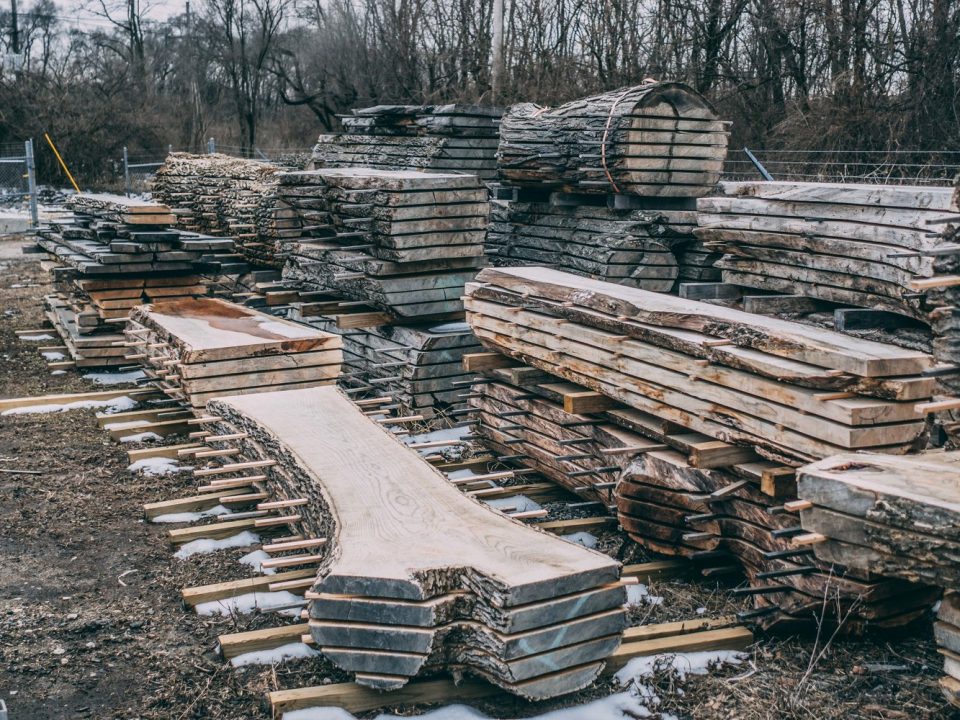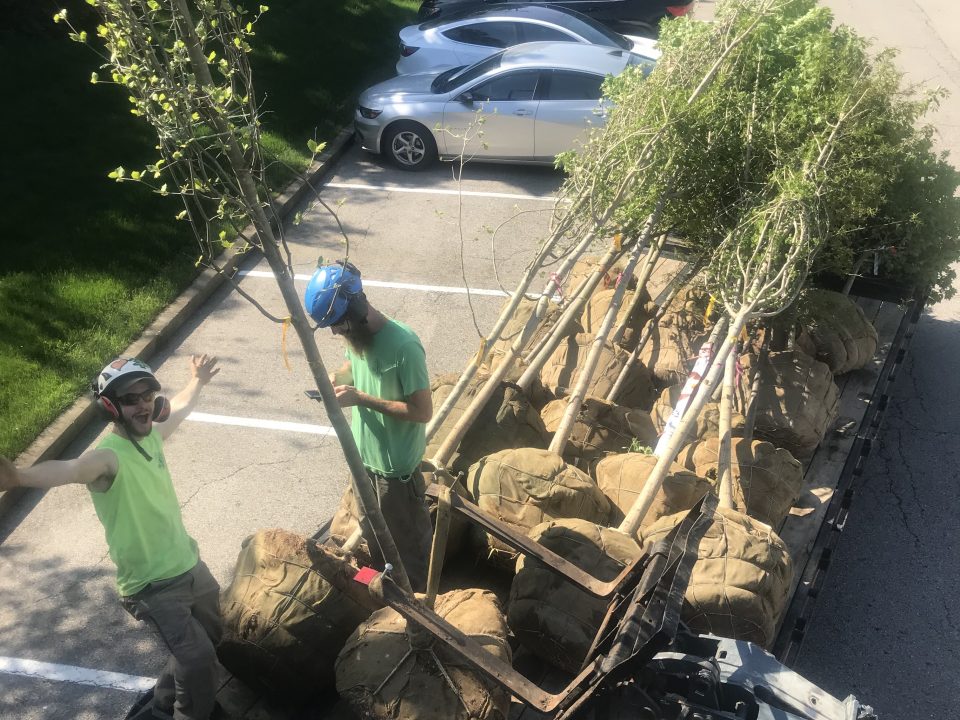Old, mature trees are a large part of what makes Clintonville unique. Many Clintonville residents love their trees and therefore take tree disease seriously.
Oak Wilt, a fungal disease that grows in the vascular tissue of oak trees, has been diagnosed in a few trees in Clintonville just within the past 12 months. According to Jacob Sauer, owner of Jacob Sauer Tree Care, this disease blocks the nutrients from travelling through the tree.
“The fungus isn’t in the soil but it exists in the root system,” Ames said. “If the roots of two oak trees are touching and one of them has Oak Wilt, the fungus can spread. That is the primary vector.”The transmission of the disease is complicated, according to Nathan “Boots” Ames, owner of Ames Arboreal Group.
“The other way the disease can spread takes very specific circumstances,” said Sauer. “It’s transmitted by picnic beetles that feed on the fungal mass that erupts from under the bark after an infected tree is dead. If the beetles that have eaten from that fungal mass find other trees with open wounds and then feed from those wounds, they can spread the disease.”
Open wounds include open areas from tree trimming and even cuts made when an exposed root is run over by a lawn mower.
“Again, the circumstances have to be just right for the disease to be spread by the picnic beetle,” said Sauer, “because an oak tree chemically seals its wounds after eight days.”
Clintonville resident Gerry Brevoort has experienced the effects of Oak Wilt.
“We have an oak tree in the back yard that is pushing 100 years,” she said. “All of a sudden it dropped a couple of limbs. I called Jacob and he talked to me about Oak Wilt. So, we are treating our tree to preserve it for as long as we can.”
She and Sauer, who grew up in Clintonville, want to educate residents about this new issue.
“Clintonville loves their trees and the neighborhood is known for its stately enormous old beauties, perhaps none more regal than the oak,” she said.
“The consequences are catastrophic,” Ames said. “You are looking at a dead tree in six weeks.”
This type of unseasonal browning can be an indicator of a diseased oak tree.
(Photo courtesy of D.W. French,
University of Minnesota, Bugwood.org.)
If the disease is caught in time, there are steps that can be taken to preserve and prolong the life of the tree.
“The best thing that tree owners can do is to know that they cannot prune oak trees during the growing season – that is pivotal,” said Sauer. “It isn’t safe. You are not going to stop the utility companies from cutting your oak tree, but you do need to treat the cut wounds quickly.”
“If you have oak trees in close proximity, say 250 feet away from other oak trees,” said Sauer, “you have a higher chance of issues. And people don’t think about what happens when they make little cuts like running over an exposed root while cutting the lawn.”
“If there is a tree that has been killed by Oak Wilt, you are probably not going to save the adjacent trees,” said Ames. “They may not be showing symptoms but they are probably infected. You can preserve them but not save them.”
Sauer and Ames both have a rigid protocol for treating Oak Wilt.
“I am not going to treat every single one of my clients with fungicide,” said Ames. “I am not going to over sell it. Trunk injections are invasive and we are putting chemicals into the vascular system of the tree and you cannot continually do this. So you don’t want to do it until you know it is needed.”
“I know there are some other companies selling the treatment of oak trees because they see it as a revenue stream,” said Sauer. “I tell my clients not to get their oak trees treated unless they are under pressure – such as an infected tree within close proximity.”
There are specific signs that a tree owner can look for, according to Sauer.
“Tree owners need to look for large sections of the oak tree’s canopy dying back rapidly,” said Sauer. “If you don’t have any dead limbs but your do see large brown areas, especially at the top of the tree, you should be concerned.”
“People should look for rapid wilting on the tree,” said David McCann, plant pathologist and Plant Health Lab director at the Ohio Department of Agriculture.
“The real key is leaf drop in the middle of the season – even green leaves will drop off. The green leaves that drop off will have a water-soaked look. It will look dark and swollen – like if you stick your finger in water for awhile. They also have blotches that form from the outer edges of the leaf. It may look like it is turning brown from the edges inward.”
“Oak Wilt affects all oak species,” said Sauer. “White oak, because of the way the trees put on their active vascular tissues at the beginning of spring, can see the effects of the disease pretty quickly. But red oak has several layers of active tissue, which slows down the disease tremendously. It does kill them but it takes longer.”
“Once a tree is infected there is no saving it,” said Sauer. “But you need to take care of the trees around it.
“There will be quick hard decisions to make. And, you don’t want to remove the infected tree during the growing season. It has to be done in the winter.”
Both Sauer and Ames are concerned about people deciding to treat their oak trees regardless of what is happening to the surrounding oak trees.
“My biggest concern is over-treating, “said Sauer.
For more information, visit the web site ohioline.osu.edu/factsheet/plpath-tree-02.







